Culture
Sightseeing Spots
![Zenrin Avenue[Zenringai]](../img/contents/culture_03_01.jpg)
禅林街 (Zenrin Avenue[Zenringai])
Zenrin Avenue of Nishishigemori is locates southwest of Hirosaki castle which is called Urakimon (the back demon's gate) on Chinese geomancy. This avenue has 33 temples of Soto school of Zen Buddhism. This number 33 comes from the Lotus Sutra of 33 Kannon and people have faith deeply. It is rare that same sects temple standing in one place. It was designated as a national historic site in 1947.
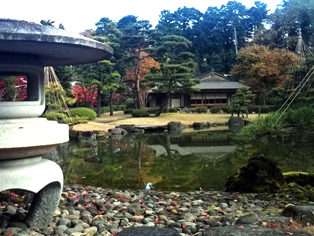
藤田記念庭園 (Fujita Memorial Japanese Garden)
Fujita Memorial Japanese Garden was ordered to build in 1919 by Fujita Kenichi who was the first head of the Japan Chamber of Commerce and Industry.
Hirosaki city reopened this Japanese garden in 1991 to celebrate of the 100th anniversary of the establishment of Hirosaki as a city.
There are Western House and Japanese house in this garden which you can feel Taisho Period. Site area is about 21000 m².
In the garden, there is a hill part and low land part. The hill part is borrowed landscape that you can view Mt. Iwaki and the low land part is a ponds and springs walk-through Japanese Garden that you can enjoy seasonal sceneries with beautiful flowers such as irises or azaleas.
Also, there is cafe on the first floor of the Western House. Drinking Coffee with enjoying the garden view is such a special.
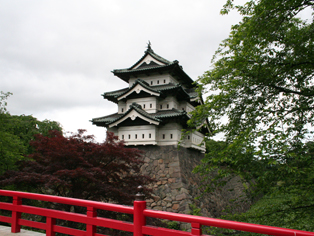
弘前城天守閣 (Hirosaki Castel Tower)
The castle tower used to splendid five story tower which stand on the southwestern of castle’s keep. But this tower was hit by lightning and burnt down. They tried to rebuild but five story towers was prohibited with the low of One Castle per Province then. Unwillingly, they rebuilt corner tower to build three story castle towers.
Hirosaki castle tower is not that big but it’s the only one castle tower in Tohoku area which rebuilt at Edo Period. This castle tower familiar as the Hirosaki Symbol.
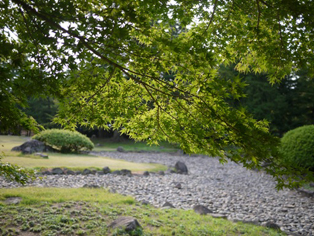
弘前城植物園 (Hirosaki Castle Botanical Garden)
After put the Sannomaru(Outer Section) of Hirosaki Park in good condition, Hirosaki Castle Botanical Garden was built. It has an area of 7.6ha and 1500 species plants and 124000 trees are planted. This Botanical Garden is enjoyable in every season.
When Cherry blossoms festival season, you can also enjoy beautiful Magnolia flowers. When the second half of the festival, deep pink double-flowered Prunus yedoensis. The end of May, you should not miss the Davidia involucrata’s white flowers which come from China. This flowers looks like handkerchief and this tree is as one of the five tallest trees in Japan.
The peonies garden is beautiful besides. You will admire the beauty of trees with the seasons: Roses, Mimosa and Lycoris squamigera in summer and Japanese anemone, Maple, Beech and Kousa Dogwood in autumn.
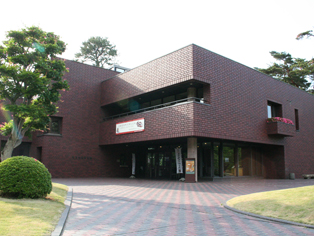
弘前市立博物館 (Hirosaki City Museum)
City Museum stands on Sannomaru area’s one corner of Hirosaki Park which shows solemn sight enclosed with old pine trees.
There are exhibited Domains of Tsugaru’s historical materials or art craftworks . Besides these, special or planned exhibitions are held of valuable data and cultural heritages of Tsugaru’s climate or traditions. It is contributing to improve Tsugaru Area’s culture.
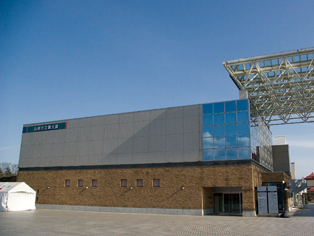
弘前市立郷土文学館 (Hirosaki City Folk Literature Museum)
Hirosaki City Folk Literature Museum which is in the Hirosaki City library. You will have a chance to see literary works of local writers.
Kuga Katsunan, Sato Koroku, Kasai Znezo, Takagi Kyozo and more related materials are in permanent exhibition at the museum. There is Ishizaka Yojiro memorial room that can learn his history intelligibly.
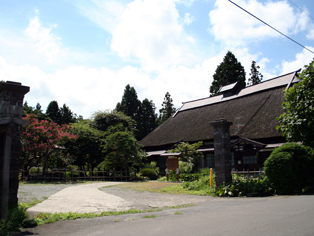
国指定名勝 瑞楽園 (Designated as National Site of Scenic Beauty Zuirakuen Gartden)
uirakuen garden is a dry-landscape garden of Oishi Manabu school. When the feudal government period of Tsugaru, it built for shoin house of the Tsushima family who were wealthy village headman of Takasugi-gumi from age to age.
This garden was created 15 years by gardener Takahashi Teizan who is the foremost gardener of Bugaku School Style gardens in Meiji Period. When Showa Period, Teizan’s pupil finished to extend and reconstruct the garden. They made Tsukiyama(small hill), dry waterfall and dry pond combined large rocks and throw a stone bridge over it. This Bugaku School style Garden’s gardening techniques are tradition handed down in this area and it left in its good condition.
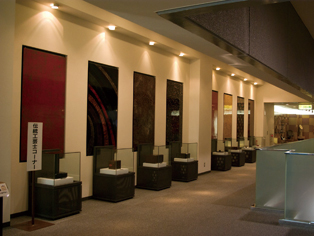
山車展示館 (Float Pavilion)
Floats carried in parades August 15th in 1682 for purification ritual of portable shrine, when the fourth the lord of the domain Tsugaru Nobumasa was managed. Doll of floats influenced by the Kyoto and Edo culture and those 7 floats are displayed there. Also Tsugaru Joppari-Daiko(4 m tall) is displayed which is pulled out to the Neputa Festival in Hirosaki.
